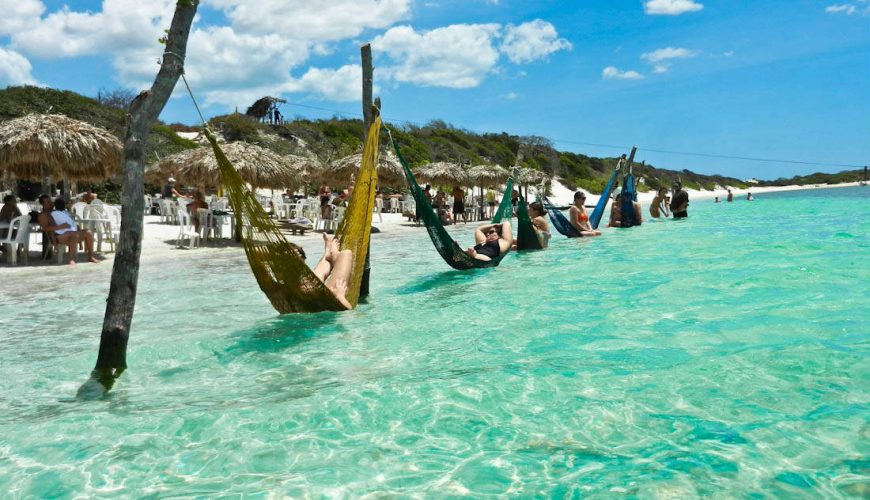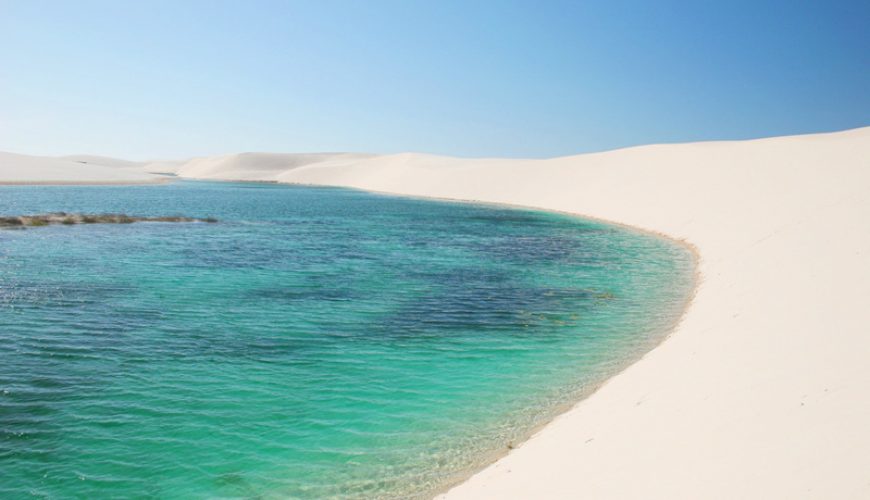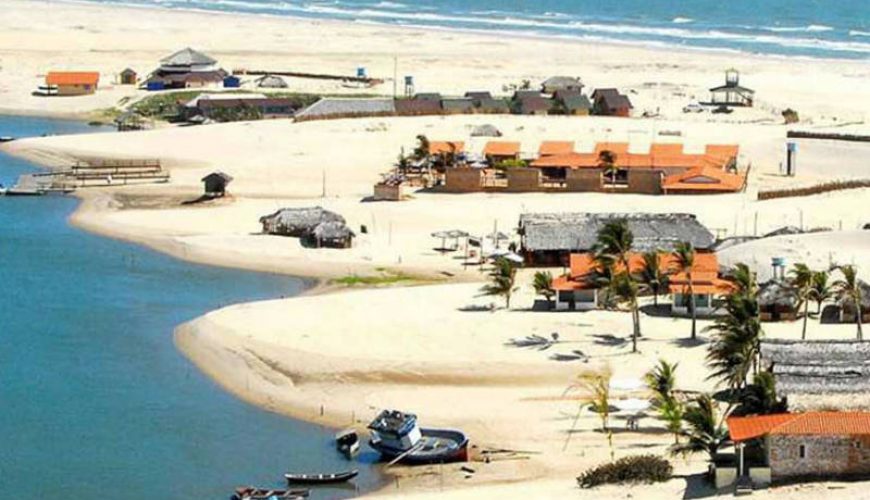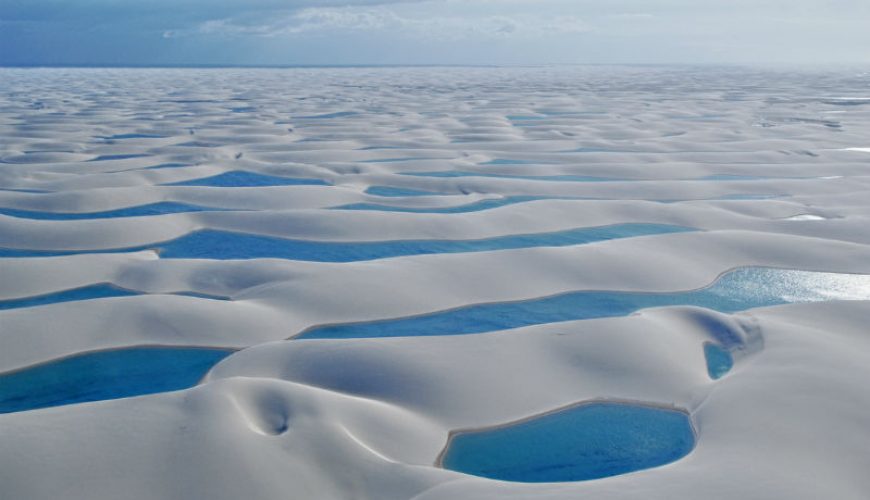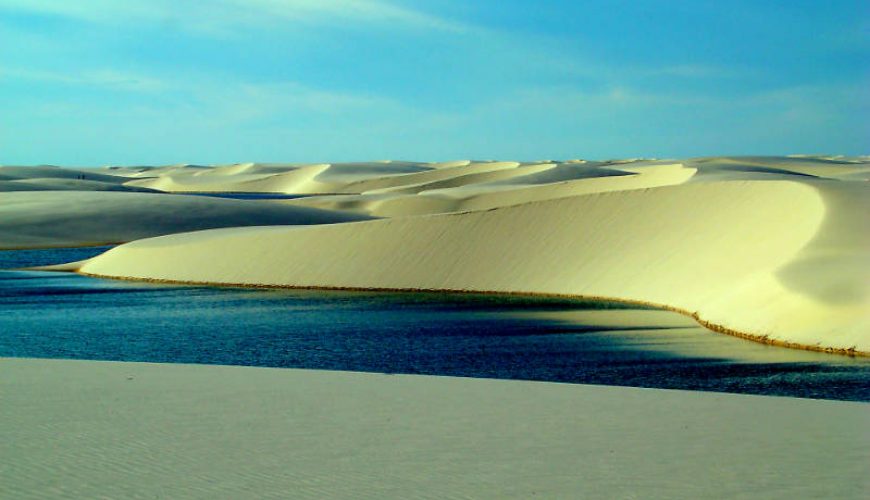Tour Categories: Ecotourism
An intense and delicious adventure awaits you along the paradisiacal beaches of the North East of Brazil. You will start your adventure in the national park of the Lençóis Maranhenses where you will discover the famous Brazilian desert.
Leia Mais
It is one of the main tourist destinations of Maranhão state. Lençóis Maranhenses is an hidden paradise in northeastern Brazil, Created in 1981, the National Park Maranhenses – with total area of 156,500 hectares – is part of the Route of the Emotions.
Leia Mais
In this giant ‘desert’, we can find lakes formed by the accumulation of water in the first half of the year. Lençóis Maranhenses is a hidden paradise in northeastern Brazil, it is one of the main tourist destinations of Maranhão state. Created in 1981, the National Park Maranhenses – with total area of 156,500 hectares – is part of the Route of the Emotions. The dunes – common in this region of the country – are formed by the force of the winds that create a unique landscape and constantly change their appearance.
Leia Mais
The dunes – common in this region of the country – are formed by the force of the winds that create a unique landscape and constantly change their appearance. In this giant ‘desert’, we can find lakes formed by the accumulation of water in the first half of the year.Lençóis Maranhenses is a hidden paradise in northeastern Brazil, it is one of the main tourist destinations of Maranhão state. Created in 1981, the National Park Maranhenses – with total area of 156,500 hectares – is part of the Route of the Emotions.
Leia Mais
Lençóis Maranhenses is a hidden paradise in northeastern Brazil, it is one of the main tourist destinations of Maranhão state. Created in 1981, the National Park Maranhenses – with total area of 156,500 hectares – is part of the Route of the Emotions. The dunes – common in this region of the country – are formed by the force of the winds that create a unique landscape and constantly change their appearance. In this giant ‘desert’, we can find lakes formed by the accumulation of water in the first half of the year.
Leia Mais


